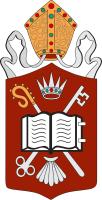| Language Policy |
Being bi-literate and trilingual is the basic aim of every student, who works continually for language enrichment. English is acquired through whole-school<br>immersion while Chinese Language is taught and further enhanced through teaching and learning in Putonghua. |
| Learning and Teaching Strategies |
We aim to provide each student with an ideal learning environment to allow them to grow and excel in learning and thinking, as well as to harness their creativity so that they possess self-learning and problem-solving skills. We also endeavour to offer our students a unique, vibrant and enjoyable education that prepares them for lifelong challenges. Curriculum tailoring is practiced by all teachers, who set teaching objectives, adapt resources and strategies and then assess the learning outcomes of students in view of their specific needs and competence. Both formal and informal curricula are flexibly employed for student life building through STEAM, moral, sex, civic, environmental, health and national education.<br>Reading is an integral part of the curriculum and a natural activity in the life of students. The Library encourages reading through a series of programmes and activities. The School devotes resources to developing reading as a lifelong habit with the support of parents. |
| School-based curriculum |
1. Electives: 3X. All students select 3 electives. They choose from a total of 13 electives, divided into 3 blocks. Students can choose music or another language for a 4th elective.<br> 2. Curriculum highlights: <br>- Students can alternatively opt to study the GCE Advanced level curriculum offered in S5 and S6. Students select 3 A level electives. They choose from 8 A level electives, divided into 3 blocks. Mathematics is a compulsory A level subject.<br>- Chinese Language, English Language and Mathematics are taught in sets to cater for learning diversity.<br>- Exploration-based learning is offered in S3 to cultivate information literacy.<br>- Economics and commerce is offered in S3 to expose students to introductory economics, business, accounting and finance. <br>- Chinese Language Enrichment and English Language Enrichment are offered in S4 for language and cultural immersion.<br>- Co-curricular Enrichment is offered in S4 and S5 to provide opportunities for learning outside the curriculum.<br>- A range of OLE activities, both inside and outside the school timetable, are offered to students to implement values education, community service, career-related experiences, aesthetic development and physical development. |
| Approach to Catering for Learner Diversity |
From Secondary One to Three, students are streamed into sets for English, Chinese and Mathematics according to their competence, allowing them to develop their basic language and numeracy skills in a non-threatening but nonetheless challenging environment. The set system continues in the senior forms, enabling students to attend English, Chinese and Mathematics lessons in smaller classes. |
| Approach to Integrated Education |
The Special Education Needs (SEN) Team of the School is responsible for looking into the needs of students with SEN and devising specific measures in support of their learning, such as examination accommodation, assignment adjustment etc. Each SEN student is under the supervision of one SEN Team member. He/she meets the student regularly and maintains contact with her parents to evaluate the effectiveness of the plan / support provided. Subject teachers are informed of the special needs and specific measures required by each student with SEN at the beginning of the school year.<br>Feedback on the performances of the students is collected at the end of each term. |
| Education Support for Non-Chinese Speaking (NCS) Students |
|
| Home-School Co-operation |
At regular intervals, parents are invited to meetings during which issues such as the school curriculum design, policies and parents’ concerns are addressed. Professional workshops are also organized for interested parents. |
| School Ethos |
We help students build moral values based on Christian principles and stress the need for respect, modesty and self-discipline. Support for students is abundantly provided through different school schemes. |
| School Development Plan |
The three areas of concern for 2021/22 - 2023/24 are: <br>1. Holistic Provision of Students’ Emotional Support<br>2. Streamlining the Junior Secondary and Senior Secondary Curriculum<br>3. Life-wide Learning |
| Teacher Professional Training and Development |
The Staff Development Team makes yearly plans for the professional development of teachers to heighten their teaching effectiveness and apply the different strategies shared by experts throughout the years. |
| Life-wide Learning |
The School offers 73 extra-curricular clubs, including those that focus on music, sports, academic work, community service and a range of interests. The Aesthetic Development Programme is implemented for S.5 to S.6 while Other Learning Programme Days are incorporated into the school calendar throughout the year. |
